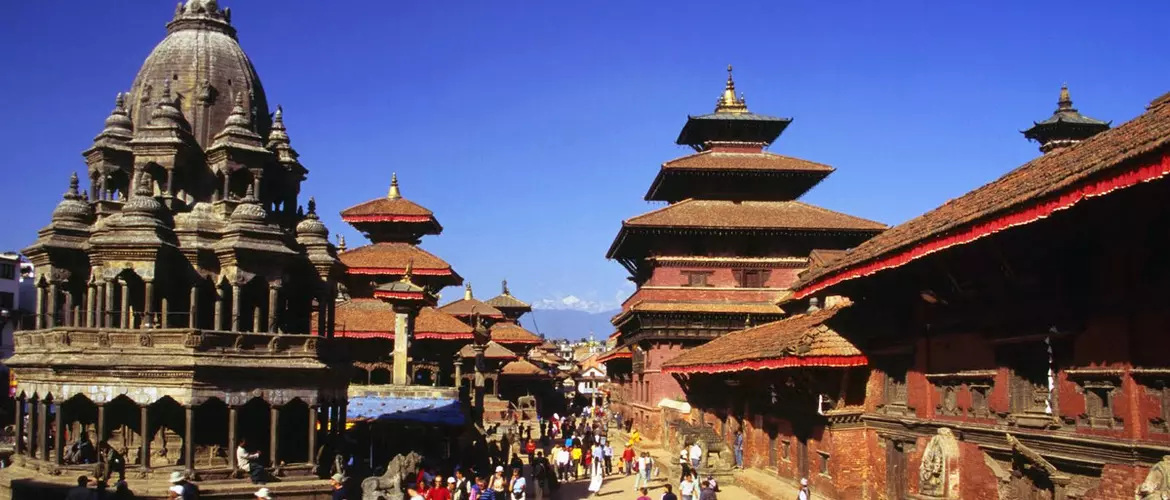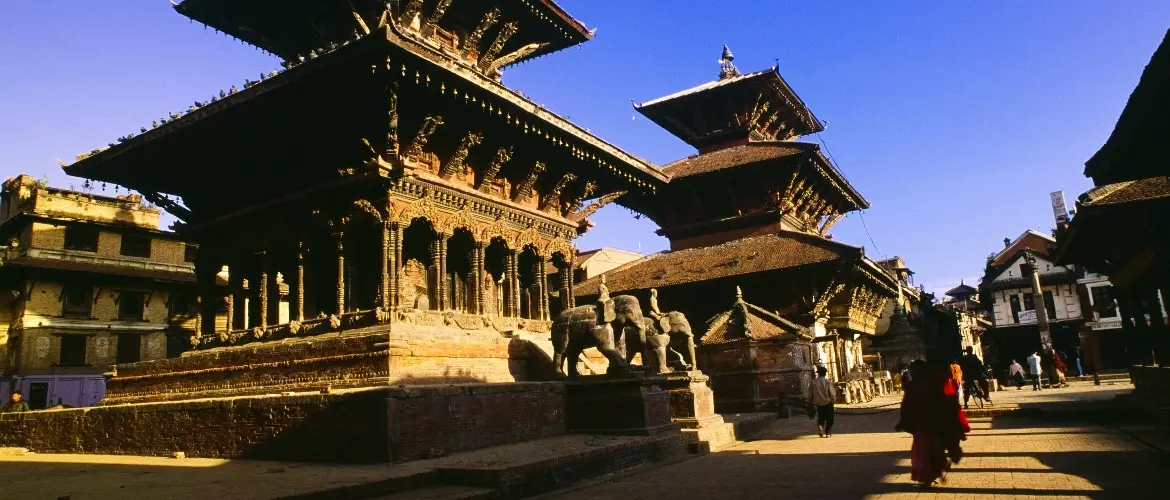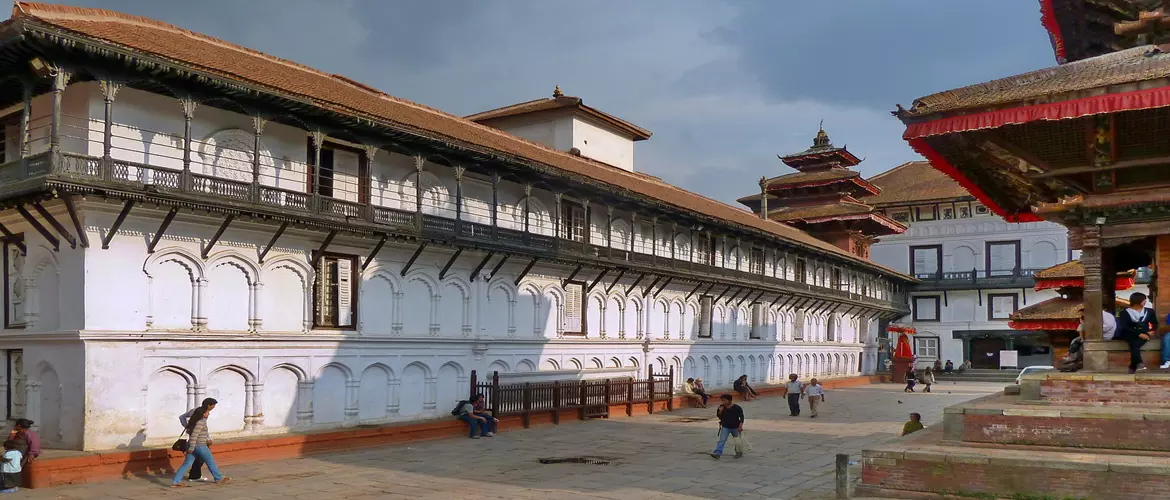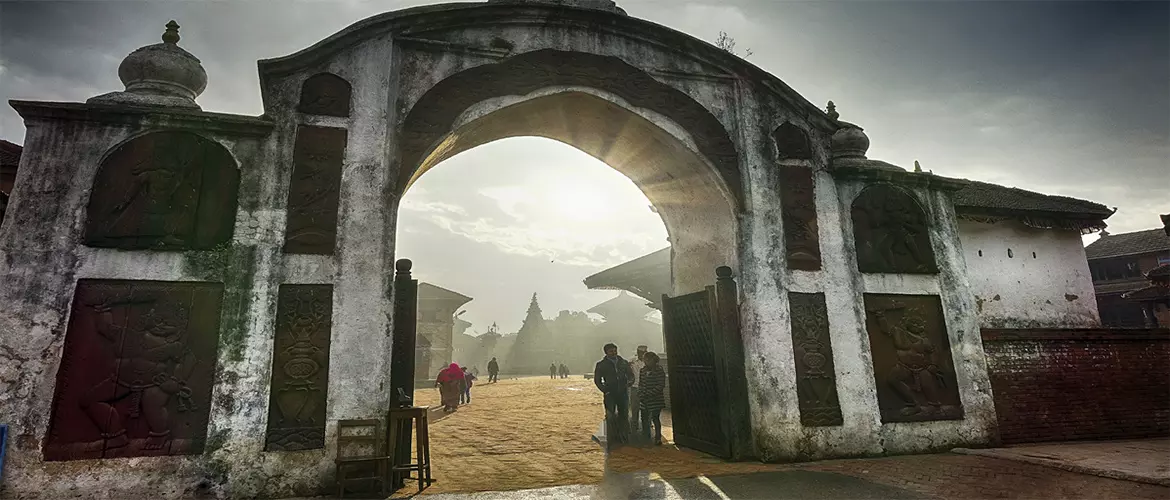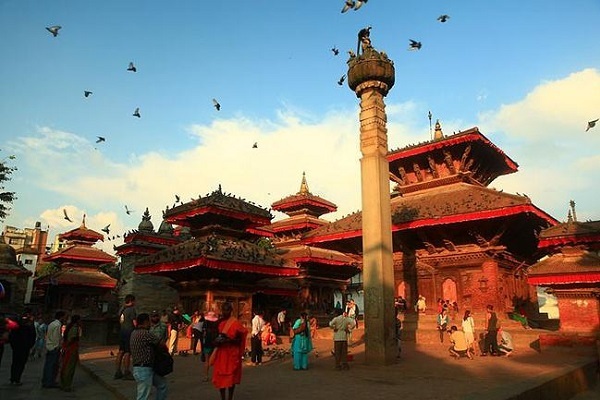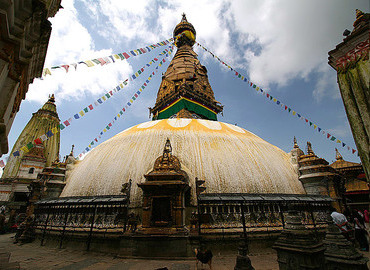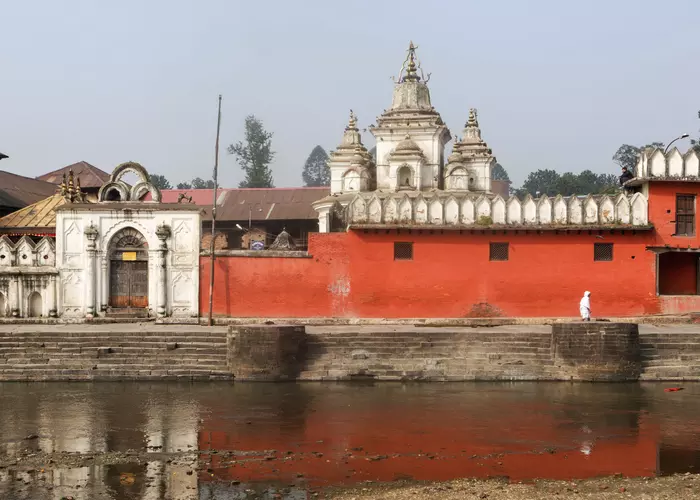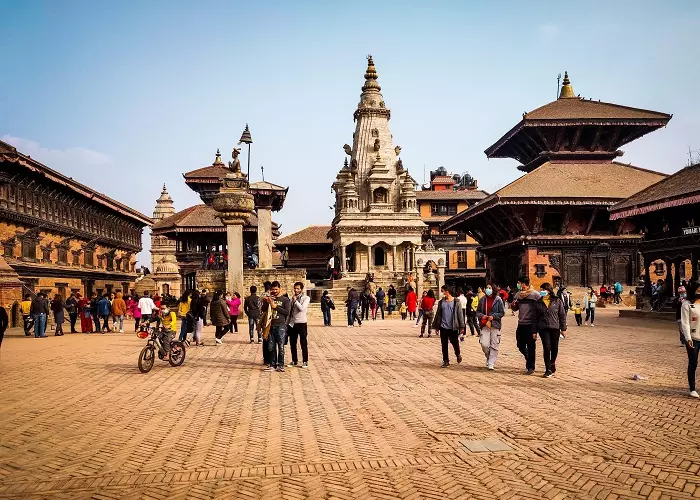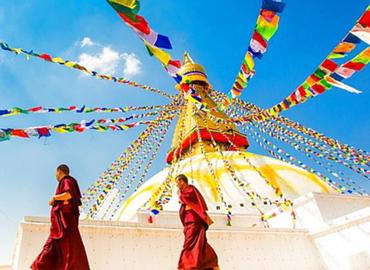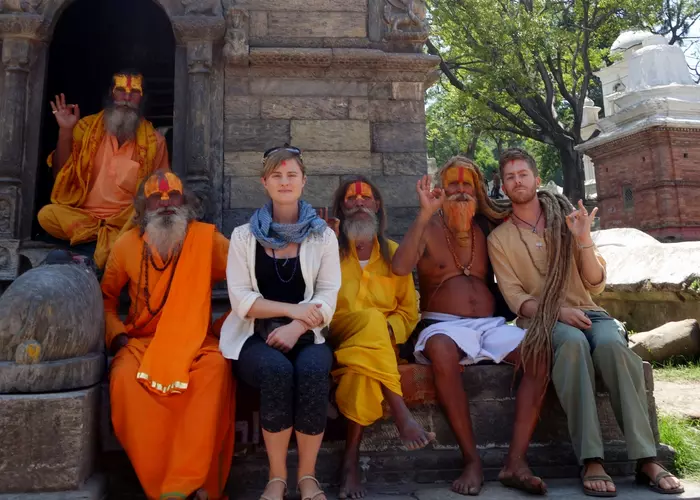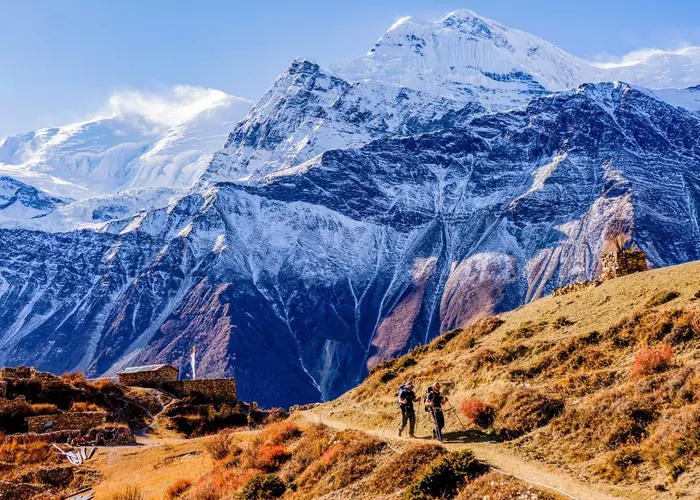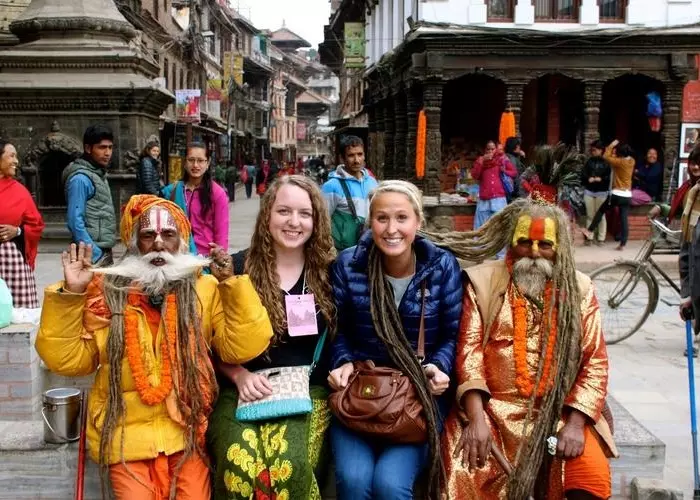Kathmandu Durbar Square is the largest palace square in Nepal, located in the south of the city center. It's also one of three Durbar Squares within Kathmandu Valley in Nepal. This Durbar Square was built in the cultural prosperity of Nepal’s history. And it is listed as a UNESCO World Heritage Site for its ancient buildings and splendid sculptures. Because it has the most cultural and religious characteristics of Nepal, it has become a world-famous tourist attraction. If you haven't been here, you can't imagine how lively and bustling this square can be.
Since this square was once the seat of the royal palace until the Shah Dynasty, the monarchs of successive dynasties built their ideal palaces and temples here. Over time, one after another beautiful palaces and temples were built around this square, forming an area with unique Nepalese religious and ethnic characteristics.
History
Durbar means "Royal Palace" in Nepali, so Kathmandu Durbar Square is used to be the center of the Malla Dynasty in the Kingdom of Kathmandu. The Malla Dynasty (1201-1769 AD) was the heyday of Nepal's art and cultural development, and it was called the "Renaissance" period of Nepal's classical culture. The Malla Dynasty ruled in Nepal for nearly 600 years. During this period, culture, architecture, and art once reached their peak.
The old palace was first built in the Lichawi Dynasty (464-879) before the 13th century, but it was not yet a palace at that time, and its scale was small. As a result, the history of Kathmandu Palace Square can be traced back to the 13th century.
After the death of King Jayayakshya Malla (1428-1482) in 1482, three of his sons held their own sides in the Kathmandu Valley and make themselves kings. Since then, Malla Kingdom has been divided into three, Kantipur(now Kathmandu), Bhadgaon, and Patan. The kings of Malla have respected Hinduism and believed that everything was bestowed by God. In order to compete for the favor of the gods, the Three Kingdoms continued to build temples and launched architectural competitions. Three palace squares were built respectively in Kathmandu, Patan, and Bhadgaon.
In 1769, King Narayan-Shah occupied the Kathmandu Valley and added four observation towers to the southeast of the square. All the successive kings of the Shah Dynasty lived in Hanuman Dhoka Palace until they moved to the new palace in 1886. However, major ceremonies such as the king's coronation are still held here.
After the continuous expansion in the Malla Dynasty and the Shah Dynasty, Kathmandu Durbar Square formed a complex of buildings consisting of 3 large open spaces and more than 50 palaces and temples. It can be said that the square in Kathmandu covers the classical Newari (the indigenous people of the Kathmandu Valley) buildings from the 16th to the 19th century, including the temple and palace.
On April 25, 2015, an 8.1 earthquake in Kathmandu caused damage to many buildings in the square. Due to the earthquake, most parts of the square are still under repair. Tourists are not allowed to enter. Fortunately, some places are still intact and worth a visit.
Highlights of Kathmandu Durbar Square
Located in the center of the old town, Kathmandu Durbar Square is the most famous square in Nepal. Durbar Square is a collection of ancient buildings from the Malla Dynasty to the Shah Dynasty of Nepal, most of which were built from the 16th to the 19th century. There are more than fifty temples and palaces in total. Among them, Hanuman Dhoka Palace, Kumari Temple, Taleju Temple, Shiva Parvati Temple, as well as Jagannath Temple, famous for its love carvings, and the statue of King Pratap Mara in front of it are particularly worth seeing.
Shiva Parvati Temple – The Most Popular Temple
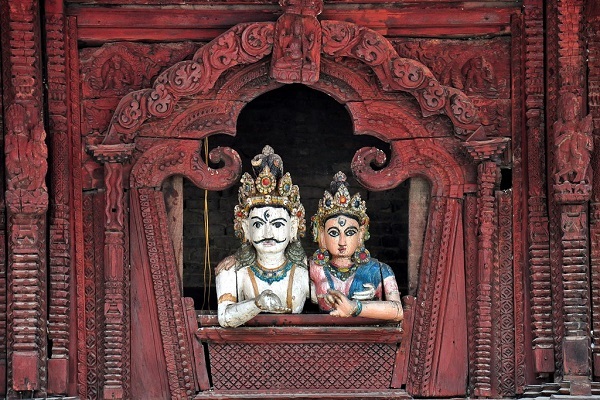 Shiva Parvati Temple is the first temple to be seen upon entering Durbar Square, dedicated to the Hindu god Shiva (also known as Mahadev) and his wife Parvati, the goddess of fertility, love, and devotion. There are wooden statues of them in the temple. It is a wooden temple built on three-story stone steps, and the stone steps are full of worship and leisure people, a very popular place.
Shiva Parvati Temple is the first temple to be seen upon entering Durbar Square, dedicated to the Hindu god Shiva (also known as Mahadev) and his wife Parvati, the goddess of fertility, love, and devotion. There are wooden statues of them in the temple. It is a wooden temple built on three-story stone steps, and the stone steps are full of worship and leisure people, a very popular place.
Jagannath Temple – Famous for the Love Engraving
Jagannath is the eighth incarnation of Lord Shiva, and his achievements in the world are greatly admired by Nepalese. In front of the temple stands a stone of King Pratap Mara. The temple pedestal is always surrounded by leisure tourists and citizens, and flocks of pigeons. The love sculptures on the temple building are the most well-known.
Hanuman Dhoka Palace – The Old Forbidden City in Nepal
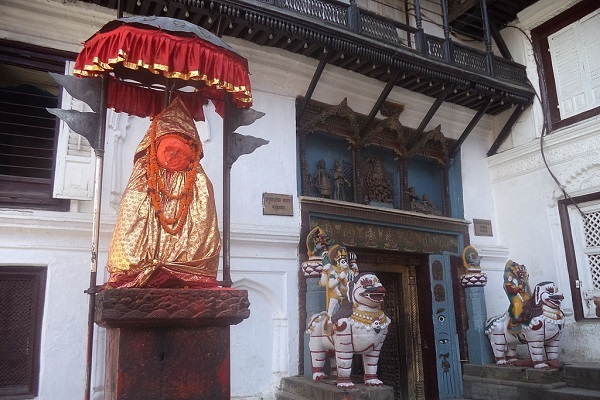 Hanuman Dhoka Palace is also known as the Old Palace. It was the oldest building on Kathmandu Durbar Square and has been Kathmandu kings’ residence since the 13th century. The Old Palace has the largest scale and richest art collection among the existing historical sites in Nepal. The palace displays the portraits and life introductions of successive kings.
Hanuman Dhoka Palace is also known as the Old Palace. It was the oldest building on Kathmandu Durbar Square and has been Kathmandu kings’ residence since the 13th century. The Old Palace has the largest scale and richest art collection among the existing historical sites in Nepal. The palace displays the portraits and life introductions of successive kings.
Hanuman Dhoka is a god monkey with vast magic powers and promotes good and eliminates evil in the popular ancient myths of Nepal. People worship the monkey god as the incarnation of defending justice. A monkey god statue stands on a stone pier about 2 meters high on the left side of the palace gate, with a vermilion brocade canopy on its head, and a piece of vermilion gauze on its face.
There are many courtyards inside the palace, such as Sundari Chowk, Mohan Chowk, and Nasal Chowk. The Nasal Chowk is where the king's coronation ceremony was held. Standing in the courtyard and looking up, you can see the nine-story Basantapur Tower.
On April 25, 2015, Hanuman Dhoka Palace partially collapsed in a magnitude 8.1 earthquake and was a dangerous building.
Taleju Temple - The Highest One Opens Only to the Royal
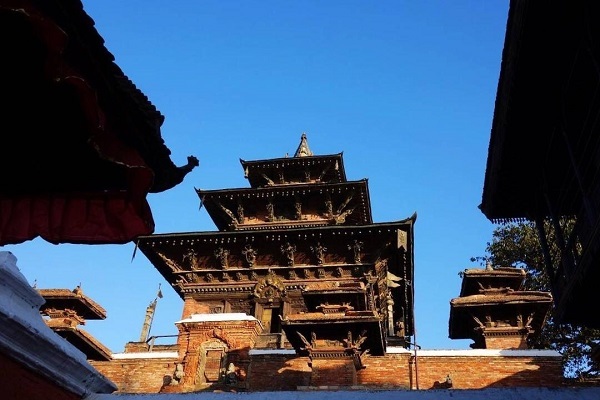 Taleju Temple was built in 1549 as a three-fold eave and gold roof temple. It is located on the north side of the Hanuman Dhoka Palace. It is more than 40 meters high and is the tallest temple building in Kathmandu, with a typical Nepalese architectural style.
Taleju Temple was built in 1549 as a three-fold eave and gold roof temple. It is located on the north side of the Hanuman Dhoka Palace. It is more than 40 meters high and is the tallest temple building in Kathmandu, with a typical Nepalese architectural style.
Good to know, the temple is only open to the public during the Dashain Festival (around October). In normal times, the temple is open to the royal family only.
Taleju is the living goddess in Hindu mythology, and Goddess Kumari is the incarnation or stand-in of the goddess Taleju.
Kumari Ghar Palace –The Temple of the Living Goddess
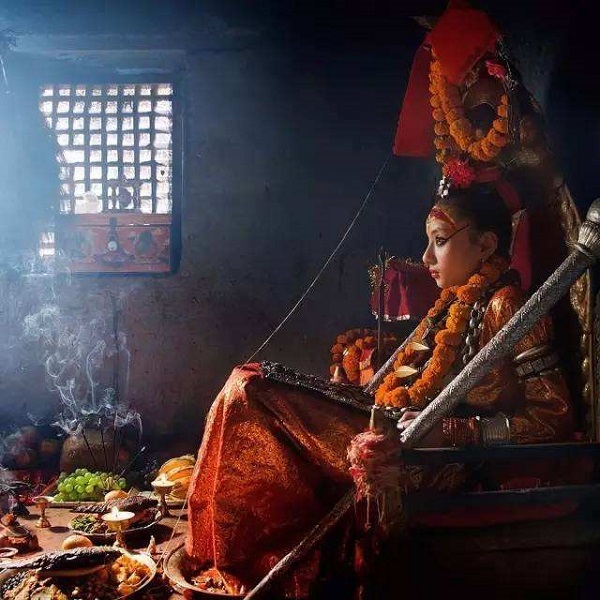 Kumari Ghar palace is a three-story Buddhist temple building on the square. It is the residence of the Kumari living goddess. The living goddess is selected strictly according to traditional standards. They will regularly show up on the third floor of the courtyard, stand for 20-30 seconds. And they will participate in large-scale celebrations every year. When the girl’s menarche came, the next one will take over. The retired girl can return to a normal life.
Kumari Ghar palace is a three-story Buddhist temple building on the square. It is the residence of the Kumari living goddess. The living goddess is selected strictly according to traditional standards. They will regularly show up on the third floor of the courtyard, stand for 20-30 seconds. And they will participate in large-scale celebrations every year. When the girl’s menarche came, the next one will take over. The retired girl can return to a normal life.
Every day, many people come to pay respect to the goddess, but no photographs are allowed. Some hawkers at the door sell postcards with the head of the goddess (15 cents per piece).
Kaal Bhairav Statue –The Most Awesome Idol
Kaal Bhairav statue is a black stone sculpture with a hideous expression. He wears a crown made of gems and skulls, white eyes and canine teeth bursting, several hands hold a sword, an ax, a shield, and a skull, and stepped on a corpse. This idol is the most terrifying incarnation of Lord Shiva, and most Nepalese believe that if you tell a lie in front of the Kaal Bhairav statue, there will be an unscheduled scourge in the future. It used to be a place to swear.
Travel Tips
- Attraction Level: World Heritage Site
- Ticket Price: 250Rs/2USD
- Best Time to Visit: Autumn
- Opening Hours: 9:00—17:00
- Suggested Tour Duration: Half a day
- Transportation: TuTu, Bike, Taxi
- Things to Do: Appreciate ancient temple architecture and take photography.
Kathmandu - Nagarkot - Kathmandu
Visit the UNESCO world cultural heritages in Kathmandu Valley and view the sunrise of the Himalayas at Nagarkot.
Kathmandu - Besisahar - ACT Trek - Pokhara - Kathmandu
ACT topped the world's trekking list. Cover the most abundant natural and cultural landscapes of Nepal.
Chengdu-Lhasa-Shigatse-EBC-Gyirong-Kathmandu
See lovely pandas then get to Kathmandu from Lhasa by land. Explore spectacular scenery, Buddhism and mysterious charm.
Email response within 0.5~24 hours.


